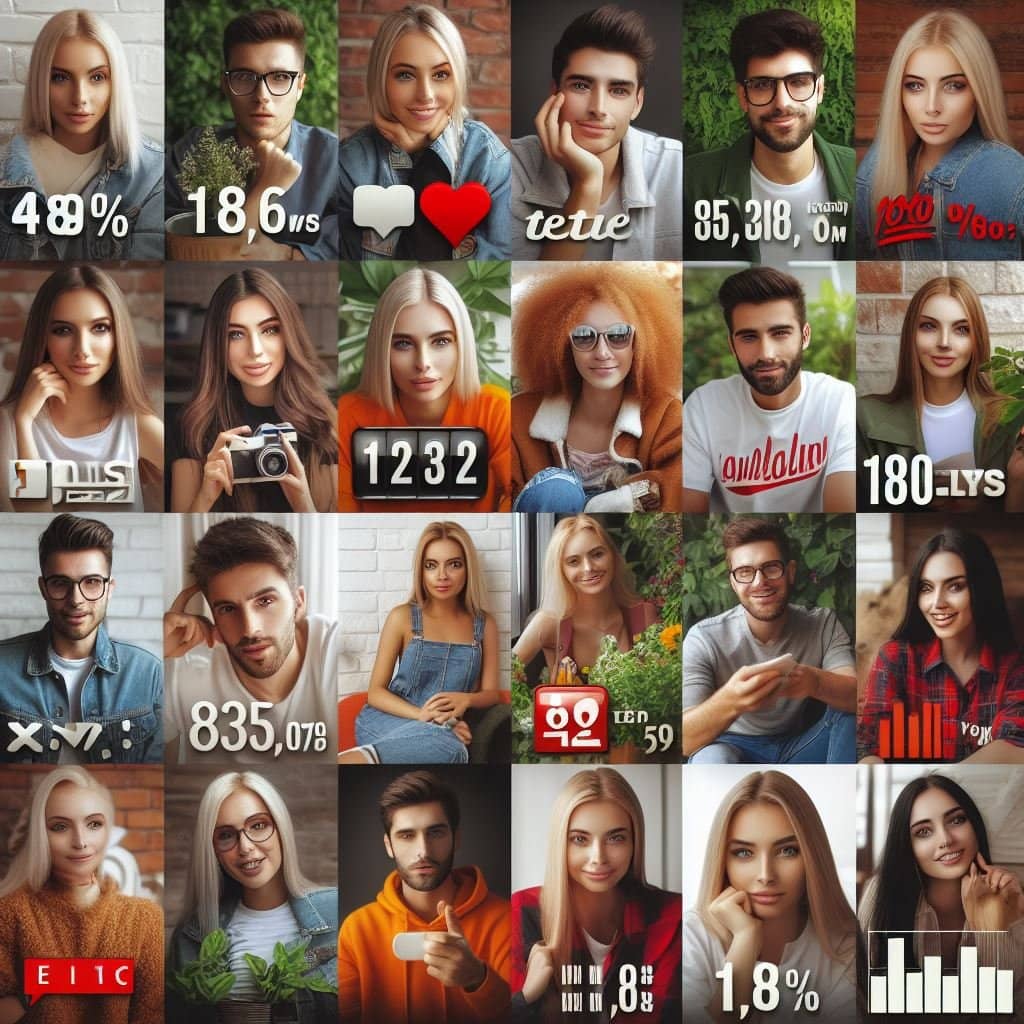Mastering Influencer Marketing: A Comprehensive Guide
In the ever-evolving landscape of digital marketing, influencer marketing has emerged as a powerful strategy, reshaping the way brands connect with their target audience. In this comprehensive guide, we’ll delve into the intricacies of influencer marketing, exploring its types, benefits, potential pitfalls, and how to create an effective strategy tailored to your brand’s needs.
What is Influencer Marketing?
At its core, influencer marketing harnesses the influence of individuals with dedicated social followings to endorse products or services. The success of this strategy lies in the trust these influencers have built with their audience, turning their recommendations into a powerful form of social proof.
Types of Influencers: Range and Reach
Choosing the right influencers involves understanding their reach, range, and engagement levels.
Influencer marketing is a type of marketing that involves collaborating with individuals who have a large following on social media platforms to promote a product or service.
It is one of the top forms of digital marketing in terms of ROI, with brands earning up to $5.78 for every $1 spent on influencer marketing There are different types of influencers that brands can collaborate with to improve their marketing campaigns.
Here are some of the most common types of influencers:
Nano Influencers
These are influencers with 1K–10K followers on social media platforms. They have a very engaged social media following and great engagement rates.
Nanoinfluencers are typically very vocal advocates of the brands and products they love, and their followers appreciate their authentic recommendations and commentary .
Microinfluencers:

These are influencers with 10K–100K followers on social media platforms.
They have a more niche audience and are experts in their respective fields. Microinfluencers are known for their high engagement rates and are often seen as more trustworthy than macro or celebrity influencers.
Macro Influencers:
These are influencers with 100K–1M followers on social media platforms.
They have a larger audience and are often seen as experts in their respective fields. Macro influencers are known for their ability to reach a wider audience and are often used by brands to promote their products or services to a larger audience .
Mega or celebrity influencers
These are influencers with 1 million or more followers on social media platforms. They are often celebrities or well-known personalities, and they are used by brands to reach a wider audience. Mega influencers are often used by brands to promote their products or services to a larger audience .
Fake influencers:
These are social media accounts that claim to be influencers but have purchased fake followers or engagement. Brands should be cautious when working with influencers and should always verify their authenticity before collaborating with them .
Brand ambassadors:
These are influencers who have an ongoing relationship with a brand and promote their products or services on a regular basis. They are often used by brands to build long-term relationships with their customers.
Content Creators;
These are influencers who create content on social media platforms such as YouTube, Instagram, and TikTok. They are often used by brands to create sponsored content that promotes their products or services .
Affiliate Marketers
These are influencers who promote a brand’s products or services and receive a commission for each sale made through their unique affiliate link .
OTHER RELATED POST
Why use influencer marketing?
The statistics speak volumes: 56% of young Americans make purchases based on influencer recommendations, and the industry reached $16.4 billion in 2022, expected to grow to $21.1 billion in 2023 (source).
Influencer marketing is a powerful tool for businesses to reach their target audience and increase brand awareness. Here are some benefits of using influencer marketing for your business:
Benefits of using Influencer marketing
- High ROI: Influencer marketing has a high return on investment (ROI), with brands earning up to $5.78 for every $1 spent on influencer marketing .
- Trusted recommendations: Influencers have a loyal following that trusts their recommendations. This means that when an influencer promotes your product or service, their followers are more likely to trust and purchase it

- Increased brand awareness: Influencer marketing can help increase brand awareness by reaching a wider audience. Influencers have a large following on social media platforms, which means that your brand can reach a larger audience through influencer marketing
- Cost-effective: Influencer marketing can be cost-effective, especially when working with micro-influencers. Micro-influencers have a smaller following but are often more engaged with their audience. This means that they can be more effective at promoting your product or service to their followers
More benefits of using Influencer marketing
- Authentic content: Influencers create authentic content that resonates with their audience. This means that when an influencer promotes your product or service, their followers are more likely to engage with the content and share it with their own followers
- Increased social media engagement: Influencer marketing can help increase social media engagement by encouraging followers to like, comment, and share content related to your brand
- Improved SEO: Influencer marketing can help improve your search engine optimization (SEO) by increasing the number of backlinks to your website. Backlinks are links from other websites to your website, and they are an important factor in determining your website’s search engine ranking.
Strategies for using influencer marketing
here are some strategies for using influencer marketing:
1.Define your taget audience
Before you start an influencer marketing campaign, it’s important to define your target audience.
The tighter you can define your target audience, the easier it is to find influencers who are relevant .
You will hopefully have already found this for your business when you wrote your business plan. Even if you haven’t formally defined your target audience, you will know the types of people who typically buy your product.
The worst kind of answer is to try to target everybody.
Even producers of everyday commodity products, such as bread and toilet paper, try to differentiate their marketing.
That is why they create ranges, focusing on different niches, e.g., a range targeting people who favor quality versus a range for the budget-conscious.
2. Set objectives
Before you can create an influencer marketing strategy, you first need to determine what you are trying to achieve.
Your aim may be something small, like gaining a set number of extra visitors to your website and having them sign up for a newsletter.
Alternatively, you might choose to engage in influencer marketing with the aim of increasing sales of a particular product by a certain percentage.
It is impossible for you to measure whether a campaign is successful or not if you haven’t set any objectives. The measurement of your ROI at the end of the campaign depends on how you have performed in relation to your initial objective.
3.Discover the most appropriate influencers
The whole reason that businesses undertake influencer marketing is to widen the reach of content relating to their product or service.
For years, businesses created advertisements promoting their products.
But the problem is that people can now see right through ads.
Ads are self-serving.
With influencer marketing, you work with the key decision-makers in your niche on social media to support your brand.
These will be the tastemakers, with large followings of keen and engaged followers. A crucial part of your influencer marketing strategy will be determining who these people are and discovering what it will take for them to positively promote your products to their followers
- Create a budget: Influencer marketing can be expensive, so it’s important to create a budget before you start. You should consider how much you’re willing to spend on each influencer, as well as how many influencers you want to work with. You should also consider the cost of creating content for your campaign
- Create a content strategy. Once you’ve identified your target audience and influencers, you need to create a content strategy. This should include the type of content you want to create as well as the frequency of posts. You should also consider the tone of your content and how it will resonate with your target audience
- Track your results: Finally, it’s important to track your results so you can measure the success of your campaign. You should track metrics such as engagement rates, click-through rates, and conversions. This will help you determine which influencers are most effective and which types of content resonate with your target audience
Influencer Marketing Mistakes to Avoid
To reap the rewards of influencer marketing, it’s crucial to sidestep potential pitfalls. Here are common mistakes and how to avoid them:
- Failing to Define Clear Goals and KPIs
- Clear goals help identify suitable influencers and measure campaign success. Defining KPIs ensures effective tracking and keeps both brand and influencer on the same page.
- Prioritizing Follower Count Over Engagement
- Focus on influencers with engaged audiences. A smaller, engaged following is often more valuable than a large, indifferent one.
- Neglecting to Research the Influencer
- Thoroughly vet influencers to ensure alignment with your brand. Examine audience demographics, authenticity, and past collaborations.
- Writing Poorly Constructed Briefs
- Craft detailed yet concise briefs, outlining campaign goals, brand information, and expectations. Avoid stifling creative freedom but provide necessary guidelines.
- Restricting the Influencer’s Creative Freedom
- Strike a balance in briefs. Avoid excessive micromanagement, allowing influencers the creative freedom to maintain authenticity.
- Not Setting Expectations Upfront
- Establish clear expectations regarding timelines, deliverables, and payment terms to ensure a smooth collaboration.
- Focusing on the Wrong Metrics
- Look beyond conversions; consider engagement metrics, brand awareness, follower growth, and inbound leads (source).
How to Create an Influencer Marketing Strategy in 5 Steps
Now, let’s explore the steps to craft an effective influencer marketing strategy for your brand:
- Find Influencers and Understand Their Payment Structure
- Research your target platform, understand influencer types, and set a budget based on compensation rates.
- Set a Budget and Management Strategy
- Factor in planning, execution, and review time. Consider hands-on management for successful influencer relationships.
- Decide on Campaign Goals and Messaging
- Hone in on specific goals, such as increasing brand awareness or targeting new demographics. Craft a compelling message for influencers to convey.
- Establish Influencer Outreach: How to Contact Influencers
- Conduct thorough research, verify authenticity, and use social media analytics tools. Tailor outreach methods based on influencer types.
- Track, Analyze, and Adjust
- Continuously monitor campaign performance, analyze metrics beyond sales, and adjust strategies based on insights (source).
Frequently Asked Questions
Q1: How much do influencers get paid?
- Influencer compensation varies based on factors like follower count, industry, and influencer type. Platforms like Influence.co offer rate maps for reference.
Q2: What metrics should I focus on besides sales?
- Consider engagement metrics, brand awareness indicators, follower growth, and inbound leads when evaluating campaign impact.
Q3: How can I ensure influencer authenticity?
- Thoroughly research influencers, assess their engagement metrics, and ensure alignment with your brand values to guarantee authenticity.
Conclusion
In conclusion, influencer marketing is a dynamic and influential strategy that, when executed thoughtfully, can elevate your brand’s presence, build trust, and drive meaningful engagement. By avoiding common pitfalls and crafting a strategic approach, you can harness the full potential of influencer collaborations.
8 relevant links:
- Elevating Ecommerce With Influencer Marketing
- The Power of Influencer Marketing in E-commerce
- The Power of Influencer Marketing in Boosting E-Commerce …
- Best Influencer Marketing E-Commerce Growth Strategies
- Impact of Influencer Marketing on E-commerce Sales
- How to Grow Your eCommerce Business with Influencer …
- The Influence of Influencer Marketing in eCommerce
- Influencer marketing for e-commerce







